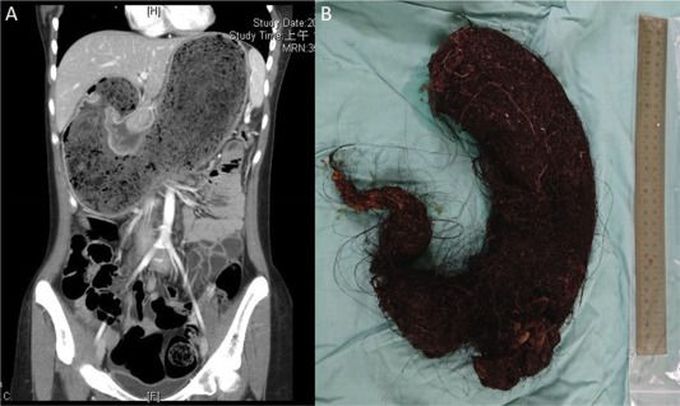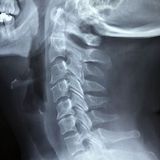


A young girl with a large trichobezoar in her stomach!
A 16 years old girl with a past history of tricophagia and microcytic anemia was presented with anorexia, vomiting, and weight loss for 2 months. On examining her abdomen, a large non-tender mass was palpable in the left upper quadrant. Abdominal CT showed large amounts of mottled material in the stomach, presumed to be a bezoar. On anterior gastrotomy, a trichobezoar was seen completely filling the stomach and extending into the duodenum. Upon histopathological examination, it was found to be a hairball containing food residue. Surgical excision of the bezoar was done and the patient was referred to the psychiatry department. A bezoar is a collection of non-digestible materials in the stomach or intestine. A trichobezoar refers to hairballs in the stomach, almost exclusively found in young female psychiatric patients. Most of the cases are asymptomatic until the mass reaches a size large enough to cause symptoms. If left untreated, it can cause perforation, gastric ulcers, and even death. Diagnosis is made by abdominal ultrasound and CT scan. Conventional laparotomy is the treatment of choice. Reference: https://www.pediatr-neonatol.com/article/S1875-9572%2819%2930520-0/fulltext
StomachWendigo syndrome


